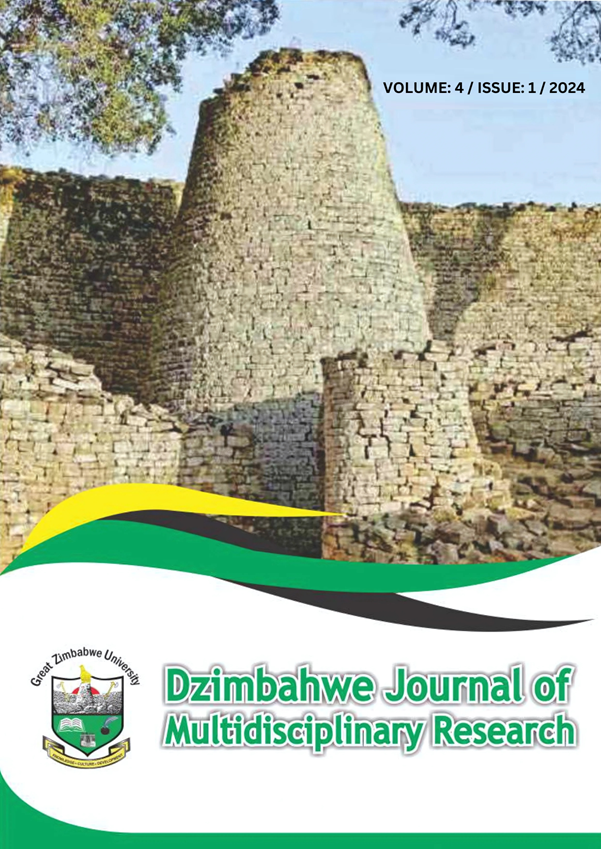Contending with the el-nino phenomenon in Zimbabwe and Southern Africa
An editorial
Keywords:
El Nino, Water-harvesting strategies, Gender and Food Security, Food Assistance and PoliticsAbstract
The theme for this Dzimbahwe Journal of Multi-Disciplinary Research Volume 4, Issue 1 is CONTENDING WITH THE EL-NINO PHENOMENON IN ZIMBABWE AND SOUTHERN AFRICA. This volume contains is in two sections A and B. Section A, which is the larger part, hosts 9 articles produced by contributors who responded to a Dzimbahwe call for papers for 2024 while Section B carries articles that pursue other causes of poor performance by institutions. The background and introduction to the El-Nino theme are that, in Sub-Saharan Africa, food insecurity is linked to several factors, chief amongst them being insufficient water for agriculture and domestic use. Water insufficiency is caused by hot and dry conditions created by the El-Nino phenomenon. El-Nino refers to climatic interaction linked to sea surface warming. The warming phase of the phenomenon called El-Nino-Southern Oscillation (ENSO) stimulates draught conditions which are prevalent in Zimbabwe (Brazier 2015:6). Three very strong El Nino events occurred in 1982-1983, 1997-1998 and 2014-2016. 1997-1998 was the worst in modern records for Zimbabwe. It left swaths of low-level underwater and killed a number of people. It also triggered water borne diseases. The 2023-2024 El Nino was marked by delayed onset of rainfall and a prolonged dry spell which has impacted negatively on food production. ENSO creates both dry and hot conditions that negatively affect food crops (Hao et al 2019). El-Nino results in adverse effects on fishing, agriculture and local weather conditions. The FAO (2016) states that the El-Nino phenomenon poses a global threat to the agricultural livelihoods of millions of people. In southern Africa, of which Zimbabwe is not an exception, the impacts of El-Nino have been felt across all sectors such as food security, nutrition, agriculture, water, sanitation, energy, health and education which lead to suffering of vulnerable populations and to economic contraction. Zimbabwe’s agricultural sector heavily relies on rainfall for crop production making it particularly vulnerable to the adverse impacts of El-Nino-induced low rainfall seasons. During these periods, reduced precipitation and increased temperatures exacerbate drought and heat stress risks, leading to reduced crop yields especially maize, insufficient rainfall and prolonged dry spells negatively affect crop yield resulting in lower productivity and compromised food security. Crops such as maize, a staple in Zimbabwe are particularly susceptible to drought stress reducing yields and causing potential crop failures.
Downloads
Published
How to Cite
Issue
Section
License
Copyright (c) 2025 DZIMBAHWE JOURNAL OF MULTIDISCIPLINARY RESEARCH

This work is licensed under a Creative Commons Attribution-NonCommercial-NoDerivatives 4.0 International License.


